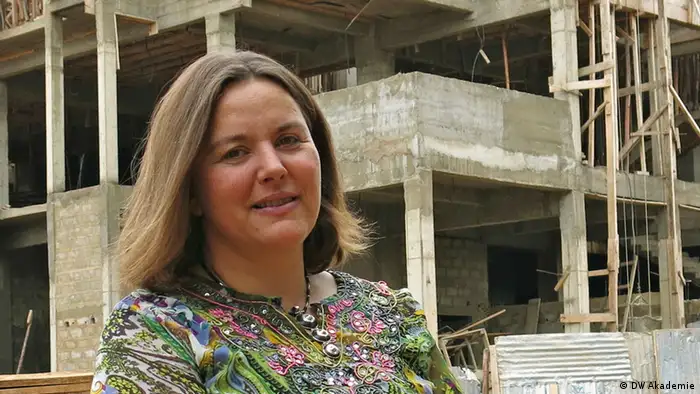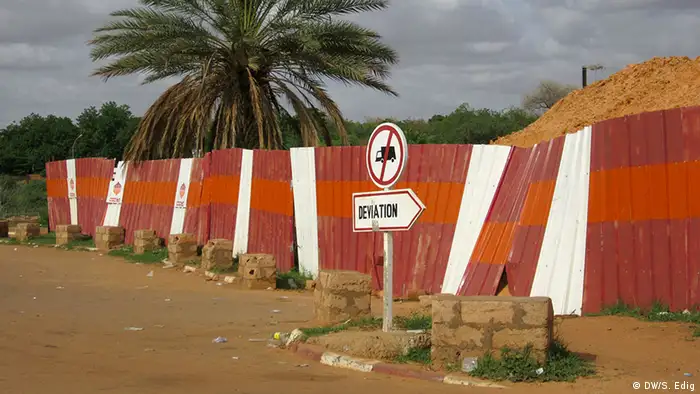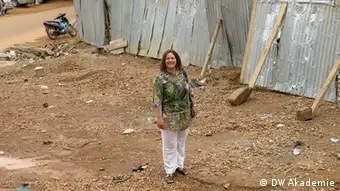Africa
Greetings from Niamey, Niger
Project coordinator Sandra van Edig hardly recognizes "her" city anymore.
"Why aren't we taking the route alongside the river?," I ask the taxi driver who picks me up from my hotel to take me to the German embassy in Niamey. "The road is closed. They're building a huge overpass." "Really? I didn't know," I respond distractedly. My eyes drift to the street as I watch the passing traffic. Niamey. My home for eleven years. I know the city like the back of my hand. At least I did. Since I moved to Berlin in 2013, the Nigerien capital has really changed. Every month a new construction site. New streets, new buildings and more and more congestion, if my view out the window is anything to go by.
I come back to the city about every two months to reengage with the DW Akademie project on conflict-sensitive reporting started in 2012. We work with journalists, talking about how to report on conflict in a way that promotes resolution. I always stay in the Terminus quarter of the city. When I lived here full time, my apartment was across town. It used to take me 15 minutes to make the drive.
Today it can take up to two hours. Construction, traffic jams, accidents. Or streets completely blocked off because the President is on his way to the airport. Traffic is brought to a halt on all major thoroughfares and the military lines the street. No one is allowed through. The soldiers stand tense, and ill at ease as the President's SUV zips by the sea of cars at 80 km/h, accompanied by a motorcade of light-wheeled tanks and jeeps.
Gridlock
Mahamadou Issoufou was elected President of the Republic of Niger in 2011. Aided by the military, political opponents attempted to assassinate him just two months after he took office. His policies – especially his determination to stamp out corruption – are not popular in all quarters. An ambitious urban development plan tops the President's agenda - and is controversial too. Niamey, the capital of the Niger Republic in the Sahel region, is slated to become a model of modern, beautiful urban planning by 2017. The program is called Niamey Nyala! or Beautiful Niamey! It has become a popular gripe on the lips of many drivers each morning when hundreds of cars, taxis and motorcycles clog the streets, or a blackout has caused gridlock at a traffic light. Everyone has the same objective: To get to where they are going as quickly as possible.
Niamey Nyala: The plans are far-reaching and include expanding the road network, constructing affordable housing, modernizing the markets, and building a rail link to Benin. A few beltways outfitted with solar lights have been completed so far. Other projects will take years to finish. The western arterial road is lined with tracks, part of the rail line to Benin. Trains aren't up and running yet though. According to officials, there are still some problems with the bridges. But progress is being made and optimism reigns in government circles.
The river is eternal
I ask the driver to take me down to the river. I want to see the construction site for the latest overpass. Cranes soar behind a high fence. The once-busy street is almost completely empty. The displaced cars crowd the detour through the old market. Chinese construction workers pour cement for the future road. This intersection will ease congestion as of spring 2017, according to the project description.
Sandra van Edig has worked as a project coordinator for DW Akademie since 2012. She supervises the "Conflict-Sensitive Reporting in Niger" project funded by the German Foreign Office. Sandra lived in the Nigerien capital Niamey from 1999 to 2013, working as a freelance journalist. Berlin, Germany is now her home base.
DW recommends
- Date 18.11.2015
- Author Sandra van Edig / mmg
- Print Print this page
- Permalink https://p.dw.com/p/1H7aK
- Date 18.11.2015
- Author Sandra van Edig / mmg
- Print Print this page
- Permalink https://p.dw.com/p/1H7aK



